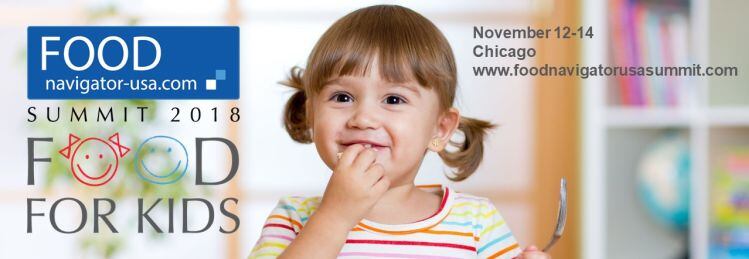All 18 companies that participate in the Council of Better Business Bureaus’ self-regulatory Children’s Food and Beverage Advertising Initiative have agreed to implement stronger Category-Specific Uniform Nutrition Criteria that apply to foods advertised to children 12 years and younger by Jan. 1, 2020.
The revised criteria is part of a national effort to address childhood obesity concerns as well as ongoing efforts to encourage children to make healthier food choices, and is supported by CFBAI participants, including the American Licorice Company, Burger King, Campbell Soup, Coca-Cola, Conagra Brands, Danone North America, PBC, Ferrero USA, General Mills, Hershey, Kellogg, Kraft Heinz, Mars, McDonald’s USA, Mondelez Global, Nestlé USA, PepsiCo, Post Foods, and Unilever USA.
New standards align with updated regulatory requirements
The updated standards reflect the most current scientific recommendations and government standards related to nutrition, including advice outlined in the 2015-2020 Dietary Guidelines for Americans and the new Nutrition Facts Panel. Indeed, the new standards will go into effect Jan. 1, 2020 – the same time as the new Nutrition Facts and Supplement Facts labels and serving size final rules.
“CFBAI also considered other relevant standards, including the US Department of Agriculture’s Smart Snacks standards that govern the sale of competitive foods in schools, regulations regarding the National School Lunch and School Breakfast programs and certain third-party nutrition standards and guidelines,” according to a white paper that outlines the changes.
The new standards also take into account insights from “one-on-one discussions and … a roundtable discussion held at the 2016 Partnership for a Healthier America Summit,” according to the white paper.
Stricter added sugar and sodium limits
Among the new standards that will go into effect in 2020 is an ‘added sugars’ criteria that will replace the current ‘total sugars’ guideline in the 2011 criteria and align with the addition of an ‘added sugars’ line in the new Nutrition Facts panel.
This change will impact some products more than others. For example, an 8 ounce serving of milk under the new guidelines will allow 3 grams – or 23% -- less added sugar than the prior criteria. According to the white paper, this reduction “supports the goal of gradually adjusting children’s palates to accept less sweet versions of flavored milks without reducing consumption levels of this nutrient dense beverage.”
Cereals, savory snacks and sweet snacks also all will see a significant reduction in allowable added sugar under the guidelines. The revised criteria for cereal targets a 10% decrease in added sugar per ounce, while savory snacks will see a reduction of 6 grams from 10 grams allowed under the old guidelines to only 4 grams under the new guidelines. Sweet snacks also will have a cap of 9 grams of added sugar under the new criteria compared to 10 grams under the old rules.
Along with reducing allowable sugar, the new guidelines also limit sodium in 13 of the 17 categories, including several categories that the Centers for Disease Control and Prevention identify as top sources for sodium. These include a targeted reduction of 14% in breads, 17% in cheeses, 10% in savory snacks and 5% in mixed dishes.
Positive nutrient requirements strengthened
The guidelines not only limit undesirable nutrients, but also seek to boost beneficial ones.
For example, the whole grain foods criteria has been revised to ensure foods contribute a “meaningful amount of whole grains,” according to CFBAI. As such, it is no longer enough simply to provide a half serving of whole grains to qualify. Rather, now foods must check this box as well as have at least a whole grain as the first ingredient, 50% whole grains by weight of the product or 50% whole grains by weight of grains, according to the revised guidelines.
The revised criteria also strive to boost beneficial nutrients by requiring more food groups in main dishes and meals and by limiting the nutrient-based qualification requirements to nutrients that the dietary guidelines for Americans identify as ‘under-consumed.’
Increased transparency around food categories
Finally, to make all these changes easier to attain, as well as additional goals, the revised criteria creates new categories of foods that were previously bundled together in a broader category, such as separating sweet and savory snacks.
The new, more specific categories allow the requirements to be tailored more specifically to the dietary roles the foods play in the overall diet, according to CFBAI.
A broad impact
Overall these changes will disqualify about 40% of the foods that manufacturers and restaurants currently can advertise to children under 12 years – a dramatic change that CFBAI staff hope will encourage companies to reformulate products with heathier profiles and increased nutrient density.
“The revised criteria, as well as the relatively short timeframe for implementation (less than 18 months), will impose significant challenges for participants, most of whom at the same time are implementing the new NFP requirements for thousands of products,” CFBAI recognizes in the white paper.
Still, it adds, the changes are necessary “to ensure that the program maintains its robust and meaningful approach to driving improvements in food advertising to children.”
[Editor's note: Interested in learning more about products developed for children and how they are advertised? Join FoodNavigator-USA in Chicago this fall at our Food For Kids Summit. Find all the details and register HERE.]





